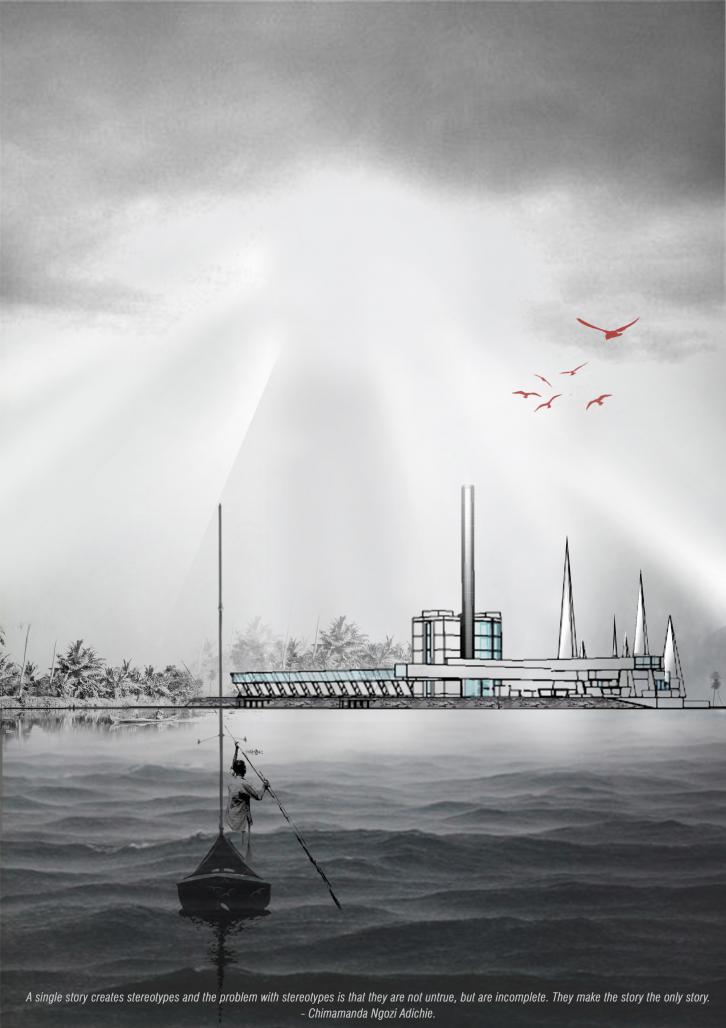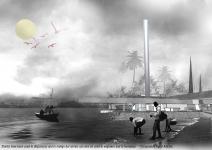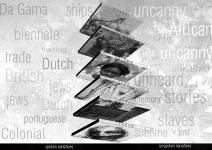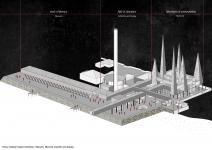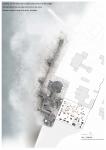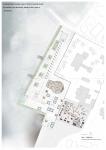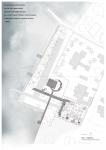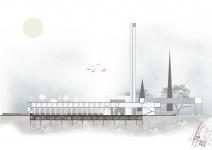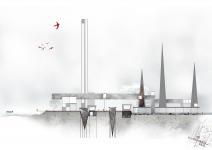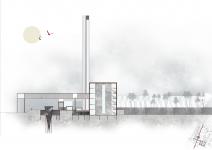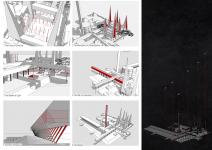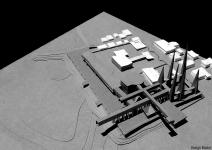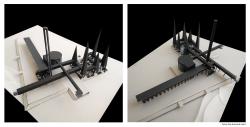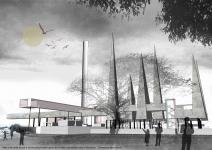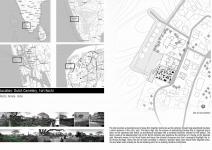A single story creates stereotypes and the problem with stereotypes is that they are not untrue, but are incomplete. They make the story the only story - Chimamanda Ngozi Adichie.
Once upon a time a group of Africans entered India during Portuguese rule as a part of the slave’s trade. Gradually they became assimilated in the local folklore and tradition of Kochi and are now seen as benevolent guardian spirits that inhabit Kappiri shrines (sacred spaces). A lot of times these stories have lived on through time but remain unacknowledged in mainstream narratives that focus primarily on Colonial legacies and heritage including the architecture done during the era. All places are palimpsests with rich and diverse histories and stories waiting to be unearthed. This Thesis seeks to celebrate untold stories of ' other' worlds by first making it a part of the Kochi Biennale that has raised awareness on various socio- cultural issues as well as given countless artists the opportunity to creatively and critically engage in Avant garde discourses. Further this thesis attempts to use architecture as as a tool to create a hypothetical setting where the narratives dominant and supressed (sub altern, local) collide in the space of the Dutch Cemetery. This critical engagement of stories, memories, place and spaces will reignite the debate on why all stories need to be told and heard. The museum invites viewers on a journey of 'self' discovery through the myriad corridors and meditative spaces. This experience it hopes will make the viewer question, ponder and think about the significance of multiple narratives and the power of architecture to 'retell' stories. These slave shrines are not only providing another historic perspective to the overall narrative but are also acting as receptacles and depositories of memories that are forgotten or are sub-altern. Hence it not only becomes necessary but also important to study and understand all the stories of a place to actually understand the cultural and historic evolution of a landscape. This thesis tries to create and understand uncanny and sublime as architectural tools to spatialize these lost memories. . The uncanny evolves out of cultural practices and activities carried out in certain landscapes that have overtime been overshadowed by contemporary European heritage.
Design Intent:
The project intent is to create and spatialize uncanny and comprises of series of architectural spaces acting as memory depository, archive and exhibition which are fragmented throughout the existing ruin of Dutch cemetery. Each tower is based on a specific historic event that took place during the African enslavement. The upright towers claim the sky for light and the subterranean towers seek the depth claiming the ground. The memorial is placed above the cemetery to heighten the feeling of uncanny.
A series of linear tube like display zones provide opportunities to artists from different fields to celebrate these lost histories. The project seeks to create dislocating and uncanny spaces by distorting familiar forms. This is achieved by transforming pure forms to visually imbalanced structures in the landscape. The design is a result of intersecting pure geometries to create unique yet familiar forms. The design takes something that is already established (from form, space , activities and notions) and defamiliarizes them to achieve what we call ‘the unhomely’.
The project hence acts as a vessel, a monument and mainly as an experience for showcasing and interpreting the lost memories, as individual structures or as a journey through time. By analyzing the revitalization of Dutch cemetery in Fort Kochi, the project shows how the cemetery function as alternative archives that harbors submerged narratives of migration and cultural exchange through unique modes of museum display, both within and beyond the walls of the gallery spaces.
keywords: Key terms: uncanny, sublime, grotesque, phenomenology, experiantility, kappiri, lost memories, archetypes, sub-altern, atmosphere, Evocative, palimpsest, multiperspectivity, multinarrative, lost stories, other
2018
0000
Location: DUTCH CEMETERY, FORT KOCHI ( 9°57’50.47”N, 76°14’17.01”E)
Area: Built-6000 sqm Open-3000 sqm
SCOPE OF THE PROJECT:
•Primarily the project looks and explores at the idea of uncanny and spatializes it with help of certain parameters.
•It creates unique spaces for display in the exhibitionary landscape of Fort Kochi.
•The projects intends to create evocative monsters in the skyline of Fort Kochi to throw light on events that are forgotten while relooking at ancient ruins in historic landscapes as memory hoarders and depositories, to celebrate lost events and cultures.
•It redefines the way we look at simple geometries (familiar) and creates disturbing spaces that are unfamiliar or are dislocating to a person.
•The thesis places a fragmented spatial installation to evoke histories of redolent pasts to reactivate the abandoned Dutch cemetery.
•The thesis looks at how it could be the climax of the already existing activity of biennale and places the towers that are tall markers in the entire context of Fort Kochi.
LIMITATIONS OF THE PROJECT:
•The project is a subjective interpretation of a central idea and is a conceptual take on the memorial events.
•It does not take into consideration any social and political concern directly that might affect the project otherwise.
•The project only deals with events that are redolent and disturbing.
•The project is alienated in a certain minor context and does not deal with issues at a macro level.
•The user groups in the project are targeted based on age and physical ability. The memorial does not provide access to the physically challenged.
•The project only looks at certain cultural practices and does not directly target the local material usage to fit into the context.
